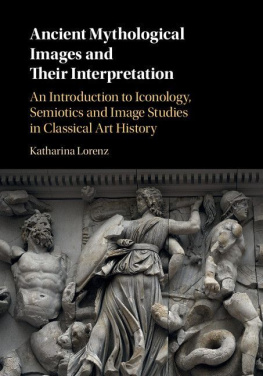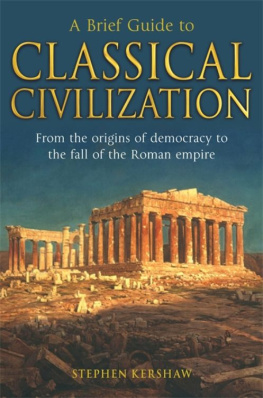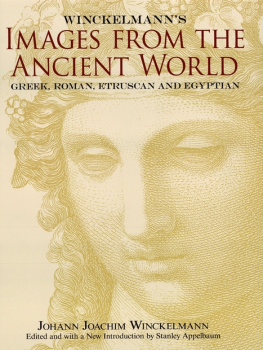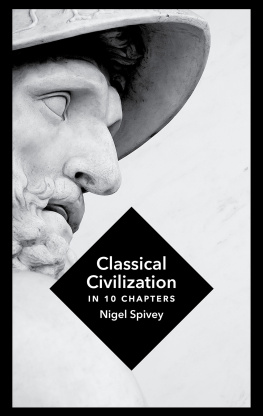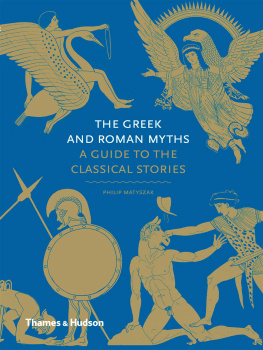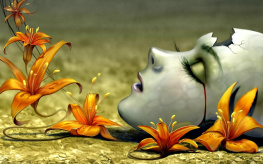When we try to make sense of pictures, what do we gain when we use a particular method and what might we be missing or even losing? Empirical experimentation on three types of mythological imagery a classical Greek pot, a frieze from Hellenistic Pergamon, and a second-century CE Roman sarcophagus enables Katharina Lorenz to demonstrate how theoretical approaches to images (specifically, iconology, semiotics, and image studies) impact the meanings we elicit from Greek and Roman art. A guide to classical images of myth and also a critical history of classical archaeologys attempts to give meaning to pictures, this book establishes a dialogue with the wider field of art history and proposes a new framework for the study of ancient visual culture. It will be essential reading not just for students of classical art history and archaeology, but for anyone interested in the possibilities and the history of studying visual culture.
Katharina Lorenz is Associate Professor in Classical Studies in the Department of Classics and Director of the Digital Humanities Centre at the University of Nottingham. Her main research interest is in the methodologies for the study of Classical art and their implications for historical understanding. She is the author of Bilder machen Rume. Mythenbilder in pompeianischen Husern (Berlin, 2008) and has published widely on Greek and Roman visual narrative, Roman painting and the domestic context, art historiography and intellectual history, and digital heritage engagement.
An Introduction to Iconology, Semiotics, and Image Studies in Classical Art History
University Printing House, Cambridge CB2 8BS, United Kingdom
Cambridge University Press is part of the University of Cambridge.
It furthers the Universitys mission by disseminating knowledge in the pursuit of education, learning, and research at the highest international levels of excellence.
www.cambridge.org
Information on this title: www.cambridge.org/9780521195089
Katharina Lorenz 2016
This publication is in copyright. Subject to statutory exception and to the provisions of relevant collective licensing agreements, no reproduction of any part may take place without the written permission of Cambridge University Press.
First published 2016
Printed in the United Kingdom by TJ International Ltd. Padstow Cornwall
A catalogue record for this publication is available from the British Library.
Library of Congress Cataloguing in Publication Data
Names: Lorenz, Katharina, author.
Title: Ancient mythological images and their interpretation :
an introduction to iconology, semiotics and image studies in
classical art history / Katharina Lorenz (University of Nottingham).
Description: Cambridge, United Kingdom; New York, New York :
Cambridge University Press, 2016. | Includes bibliographical references and index.
Identifiers: LCCN 2016013373 | ISBN 9780521195089 (hardback) |
ISBN 9780521139724 (paperback)
Subjects: LCSH: Art, ClassicalPhilosophy | Art, ClassicalHistory. |
Mythology, Greek, in art. | Mythology, Roman, in art. |
Visual communicationPhilosophy. | Visual communicationHistory. |
Image (Philosophy) | Semiotics and art. | Classical antiquities. |
BISAC: ART / History / Ancient & Classical.
Classification: LCC N5613.L67 2016 | DDC 704.9/489213dc23
LC record available at https://lccn.loc.gov/2016013373
ISBN 978-0-521-19508-9 Hardback
ISBN 978-0-521-13972-4 Paperback
Cambridge University Press has no responsibility for the persistence or accuracy of URLs for external or third-party Internet Web sites referred to in this publication and does not guarantee that any content on such Web sites is, or will remain, accurate or appropriate.
In memory of my father, the scientist.
Table of contents
Figures
Preface
The book is indebted to the intellectual stimulus of the Karlsruhe research group Image Body Media of which I was an associate member from 2002 to 2004, especially the conversations with Hans Belting, Martin Schulz, Birgit Mersmann, and Jutta Held. My interest in the methods of art-historical interpretation and the historiography of classical archaeological study was and still is stimulated by Ja Elsner, not least because of his suggestion to embark together on the adventure of translating some of Erwin Panofskys writings, an experience that has greatly shaped this book. Peter von Mllendorff and Ivana Petrovic introduced me to the work of David Wellbery; our many discussions of pictures and narratives emboldened me and gave the book its framework. A first draft of this book was prepared with support from the Arts and Humanities Research Council. My warmest thanks to all.
The book has also benefited enormously from discussion and debates with numerous colleagues and friends, including Mont Allen, Ting Chang, Esther Eidinow, Tonio Hlscher, Andreas Kropp, Susanne Muth, Stephanie Pearson, Verity Platt, Michael Squire, Jeremy Wood, and Richard Wrigley. While working on the book I was fortunate to enjoy the hospitality of the Winckelmann Institut at Humboldt Universitt Berlin here, Nikolaus Dietrich, Arne Reinhardt, and Christoph Klose offered their time for discussion and made many useful suggestions. My thanks also go to the undergraduate and graduate student cohorts of the NottinghamHumboldt Universitt Berlin exchange, QKolleg, and those of my Nottingham module, Q83VIS Visual Mythology, who, mostly without knowing it, helped to shape the argument; I would like to thank especially William Leveritt and Jodie Martyndale-Howard, who read and commented on parts of the text.
I owe special thanks to Michael Sharp, Elizabeth Hanlon, and Marianna Prizio of Cambridge University Press for their enthusiastic support of the project. The anonymous readers for the press provided thoughtful and encouraging reports that have helped steer my revisions of the text. My sincere gratitude goes to Rona Johnston Gordon for her meticulous editorial scrutiny and her skill at stamping out linguistic vagaries and improving the text. My thanks are also due to several colleagues who helped with illustrations: Tomas Lochmann and Laurent Gorgerat (Antikenmuseum Basel und Sammlung Ludwig); Martin Maischberger and Ines Bialas (Antikensammlung, Staatlische Museen zu Berlin); Elizabeth Saluk (Cleveland Museum of Art); Josephin Szczepanski (Arachne, University of Cologne); Anja Slawisch (German Archaeological Institute, Istanbul); Chris Sutherns (British Museum, London); Angelika Hildenbrandt (Badisches Landesmuseum, Karlsruhe); Claudia Wedepohl (Warburg Archive, London); Anne-Catherine Biedermann and Tiphaine Leroux (Runion des Muses Nationaux et du Grand Palais); and, especially, Sylvia Diebner, Daria Lanzuolo, and Alexandra Busch (German Archaeological Institute, Rome).
Earlier versions of parts of this book have been published elsewhere. The sections on the Louvre sarcophagus are developed from Image in distress? The death of Meleager on Roman sarcophagi, in Life, Death and Representation: Some New Work on Roman Sarcophagi , eds J. Elsner and J. Huskinson, Berlin (2011): 30532. The sections on the Pergamon frieze build on Der Grosse Fries des Pergamon-Altars: Das Stilmittel Metalepse und die Analyse von Erzhlung in der Flchenkunst, in ber die Grenze: Metalepse in Text- und Bildmedien des Altertums , eds U. Eisen and P. von Mllendorff. Berlin (2013): 11947. I wish to thank Mirko Vonderstein of De Gruyter for permission to republish material.

